Defense at the Midpoint: A Closer Look

[Barron/MGoBlog]
If you’ve been reading the site for a long time you’ll remember Seth’s “Decimated Defense” series, an excellent set of posts that painstakingly detailed why Michigan’s defense was so awful circa 2009. If you’ve been watching hockey the past few seasons, something similar may have crossed your mind.
David Nasternak is our jack-of-all-trades behind the scenes, and he’s also a huge hockey fan. He asked if I’d be interested in some data he was pulling together on power play goals against, odd-man rushes, and turnovers that led directly to goals. Naturally I was; Michigan’s defense isn’t quite Decimated Defense-level bad, but I could probably write a series of posts about the past four years and no one would bat an eye if I titled them “Disappointing Defense.”
The eye test, beloved by scouts for generations, tells us that Michigan’s defense has again been lacking in 2015-16. Thanks to the data David has compiled and some additional team-level stats from College Hockey Inc. we can try and see where the breakdowns are coming from on an otherwise solid team.
[After THE JUMP: it wouldn’t be MGoBlog without charts]
One of the more commonly cited advanced stats in hockey is Corsi, which is a measure of puck possession that takes into account shots on goal, shots at the goal, and blocked shots. The idea behind it is that the team that carries play is more likely to win because having the puck more and getting more shots toward the net than your opponent is typically a good thing.
For the following few graphs I used data from College Hockey Inc., and they order teams based on win percentage. This doesn’t precisely reflect PairWise or RPI, but it was close enough that I thought it gave a good snapshot of what good teams are doing around the country. Michigan is twelfth in win percentage, so I included them and the 11 teams above them in the data.
With Corsi in mind, I thought the best place to start our examination of the defense was with how many shots they’re allowing on net. It’s not Corsi because there isn’t data for shots that missed the net and blocked shots, but if Michigan was giving up a boatload more shots than other successful teams that’d be one line to draw on the Defensive Hangman of Doom (not pictured).
Michigan’s allowing 28.8 shots per game, and while that’s more shots than the below group is averaging (27.76) I don’t think 1.04 shots a game, or 3.75% more shots than opponents are allowing, is making much of a difference.
If shots allowed don’t explain much, then it seemed the next logical place to turn would be shots on goal margin; after all, taking a lot at whether you’re outshooting your opponent or being outshot also has ties to Corsi. Looking at margin allows us to factor in a team’s offense, and with Michigan’s offense leading the country in goals per game it’s only fair that we see whether that’s having some sort of effect on their defense.
Team in the top 12 average 4.76 more shots per game than their opponents. Michigan’s averaging 7.8 more shots than opponents, which is 63.8% above average. Michigan’s offense is certainly doing their share of shooting, which in turn means they’re keeping the puck out of the defensive zone about as well as anyone could hope.
So, not a great feeling that the first graph where Michigan’s column towers over the rest is the one where we’re looking at pucks that are going in the net. As you can see, Michigan’s really outpacing the competition when it comes to goals allowed. The rest of the top teams in the country are averaging 1.91 goals allowed per game; were it not for their prolific offense, Michigan’s three goals allowed per game would have them so much further down the win percentage column that I’d have to include more teams than would make for legible graphs. Michigan’s giving up 57% more goals than the average of this group; we’re going to have to look at an array of things to figure out how a team that’s outshooting the opposition handily could also be allowing so many shots to get behind the goaltender.
I’ve alluded to this a few times above, but Michigan’s offense is the highest scoring in the country; their goal margin is, thankfully, positive and, disappointingly but not surprisingly, 15% below average. Teams in the top 12 are outscoring their opponents by an average of 1.73 goals per game, while Michigan’s only scoring 1.47 more than their opponents.
Michigan’s not being outshot on the whole, but it’s time to dig down and see if there are situational reasons for their bloated number of goals allowed. The first thing to look at is how Michigan’s doing on the penalty kill, because the whole point of removing a defender from the ice is to make things more difficult for the penalized team.
To provide proper context, let’s look at whether Michigan’s facing disadvantageous situations more often than other top teams. The average number of penalty kills for this groups is 59.5, and Michigan’s 57 puts them 4.2% below average. One would hope, then, that they aren’t ceding more goals than average.
The average opponent power play percentage for this group is 15.24. Michigan’s 14.8% above average, and though I don’t have a p value that seems like a significant number. Keep in mind that above average here is bad; the graph below isn’t looking at penalty kill percentage but how often opponents score when they’re on the power play, so you’d like a number as close to zero as possible. But hey, at least Michigan’s not St. Cloud State. No, I don’t feel any better either.
So the penalty kill isn’t great. That’s actually not what I expected, but it’s something worth noting. When I think of the ways in which Michigan’s defense breaks down the graph below is what comes to mind, and I’m guessing it’s the same for David since the suggestion to write about this and the data came from him. Bear in mind that the odd-man rushes tallied below are those that led to goals only.
It’s natural to look at this and get mad at Martin or Cecconi because gah just stop somebody when you’re the lone man back, but consider how they got there. It’s entirely possible that their partner jumped up to pinch in the neutral or offensive zone and now they’re hung out to dry, trying to time a dive properly to eliminate a pass while hoping against hope that the goalie can handle the shot.
Unfortunately, that rosy picture doesn’t appear to be the case. Martin and Cecconi were paired together through the first eleven games of the season, and they haven’t recorded an odd-man rush goal against since the pair was split up. Things have improved as a team as well, as Michigan has only had two odd-man rush goals against since Halloween; one time Werenski was the lone man back (and also the lone defenseman on the ice) and one time Downing was the defenseman back to cover while De Jong was also on the ice.
As we reach the goals-off-turnovers section, we’re finally in “excruciating/soul crushing” territory on our journey across the goals-allowed continuum. Look at the graph below. Look at how boring that is. One person has one more turnover that led to a goal than anyone else, and the highest number is two. If the point of this is to track the cause of defensive breakdowns, that graph is informative but not exactly helpful in pointing to one specific problem.
That’s not to say the information should be brushed aside, though. Look at how many turnovers that led to goals there are. Ten may not seem like a ton through 15 games, but…
…things come into focus when that ten is equivalent to 22.2% of the goals allowed all year, or the same as the penalty kill has allowed. Even worse is the whopping 26.7% that have come on odd-man rushes. “NB” stands for non-breakdown goals; that’s a goal that was the result of great passing or a great shot or a weak goal allowed by the goaltender (not to say there have been too many, but that may be a separate post you’ll see in the near future) and not some sort of defensive mistake. Things were filtered as such because we’re looking for what’s going on defensively and not with the goaltending, and it looks like things are distributed pretty evenly between types of mistakes.
I looked at the graphs but I didn’t read all those dang words how about you summarize the words
- Odd-man rushes were a huge problem for Michigan early in the year (responsible for 26.7% of the scoring against Michigan thus far) but there have only been two that resulted in goals since the end of October. The defense pairs have been shuffled, and that sees to have significantly mitigated the issues.
- Turnovers are a pervasive problem and one that hasn’t slowed as the season has gone on. There also isn’t one guy or a small set of guys who are the problem; this is something that’s a big enough problem across a wide enough set of guys that it’s a red flag going forward.
- Michigan’s penalty kill has been below average when compared to other top teams; they’re about 15% worse than other top-12 teams, and yet they’ve allowed as many power play goals against as goals off of turnovers.
December 24th, 2015 at 3:16 PM ^
Thanks for the summary. Don't have time to sit and read everything at the moment.
As a big hockey fan, but one who is exceptionally lousy in analyzing the game I appreciate the work you put in here.
December 24th, 2015 at 5:23 PM ^
Of the major sports I more or less know what's going on in two of them.... I played and have a reasonable understanding of what the hell is going on in a football and a baseball game. I don't care enough about basketball to really wish I knew (although I suspect deep basketball strategy would be fascinating). I can't for the life of me get a real feel as to what's going on on a hockey rink beyond the primary level (I get that Lidstrom never failed to keep the puck in during the PP, that Pavel can work both the puck and his opponent's stick simultaneously, and that Crosby's combination of speed, strength on the puck, and sniping makes him pretty much the best player of his generation and still probably underappreciated.)
Thanks Adam, for the info. The more the better.
December 24th, 2015 at 5:27 PM ^
Sent from MGoBlog HD for iPhone & iPad
December 24th, 2015 at 6:08 PM ^
Ovechkin? Kane? I just don't see the incredible shift-after-shift competence with any player but Crosby (maybe Kane, but his supporting cast is so good).
I'm not questioning your thinking. I suspect you know more about this than I do.
December 24th, 2015 at 5:25 PM ^
I will say penalty kill% isn't a stat to hang ones hat on. It is meaningful, but there are very successful teams with "meh" PK% who just do not take many penalties. Having a 66% PK isn't good at all. But if averaging only 2-3 penalties a game, that's not a huge goals against problem.
As in any sport, the turnovers kill. More so than a bad PK or giving too many odd man rushes (which often result from an aggressive offense combined fore checking defenseman, bad back checking by the offense, and bad shift changes, or any combination of the above).
M is capable of overcoming the meh PK% and the odd man rushes (as they get their fair share as well) but the turnovers, particularly earlier in the year, was the biggest problem.
Goaltending is another issue and could be its own analysis. I'll comment on them if you do one.
Sent from MGoBlog HD for iPhone & iPad
December 24th, 2015 at 7:11 PM ^
Sent from MGoBlog HD for iPhone & iPad
December 24th, 2015 at 7:52 PM ^
Are turnovers that lead to odd-man rushes counted twice? Either way, too many for my liking. And too many times instead of getting the puck deep, someone tries a pass near the blue line that gets picked off.
December 25th, 2015 at 2:23 PM ^
December 26th, 2015 at 2:42 PM ^
I'm worried about Penn State. Since they entered the league we have had serious match-up problems with them.
December 26th, 2015 at 2:33 AM ^
December 26th, 2015 at 4:31 AM ^
Bye-bye, spammer!
December 26th, 2015 at 2:48 PM ^
Can we please add a few more games to the GLI? I'm glad they had Western Michigan in there last year and Northern Michigan this year but it would be so awesome to have all or most of the Michigan teams in there every year. If not lets at least schedule them at Yost. I'd rather see Lake Superior State than Mercyhurst, Robert Morris, Niagra, Dartmouth etc.
December 26th, 2015 at 3:28 PM ^
This is a similar idea to one Brian had a few years ago and which I bring up often because of how cool it would be. Have a state of Michigan tournament (or series within the season) and declare a champion. Unfortunately the fact that Michigan (and maybe MSU) have been such dicks to the smaller schools recently might make this one a fairly long way away
December 28th, 2015 at 10:50 PM ^
December 29th, 2015 at 2:15 AM ^
December 29th, 2015 at 8:26 AM ^
January 19th, 2016 at 8:26 PM ^
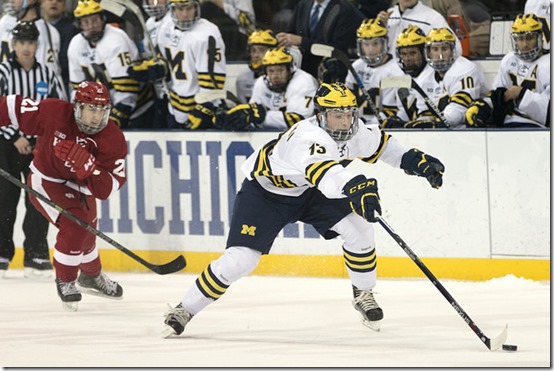
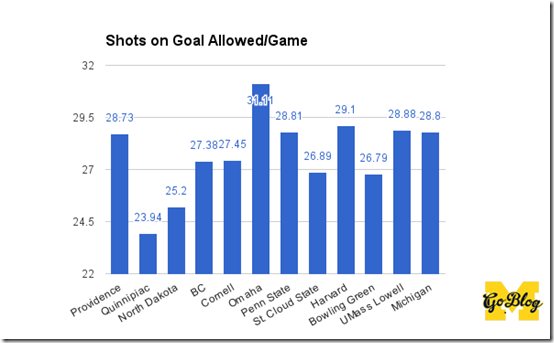
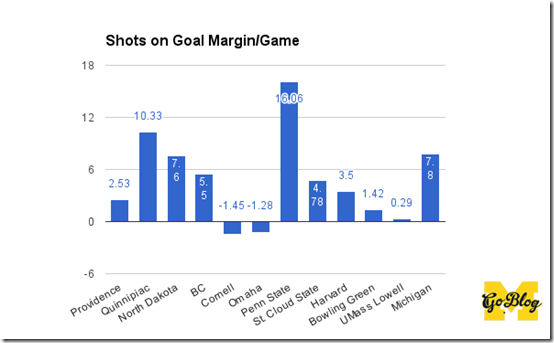
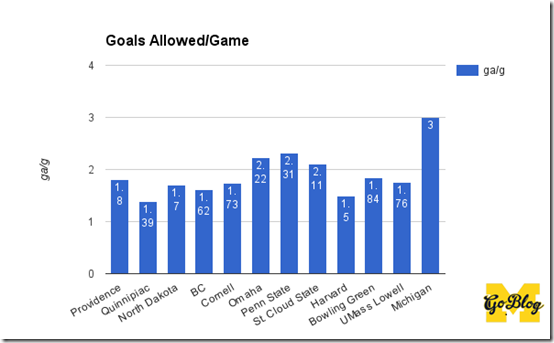

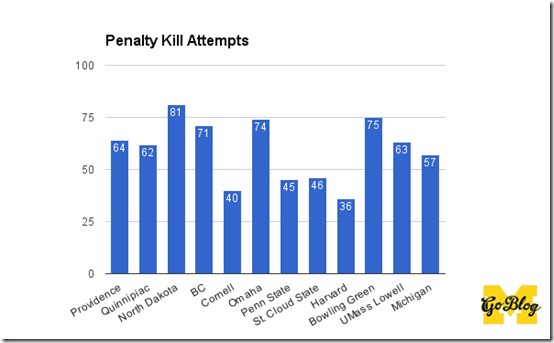
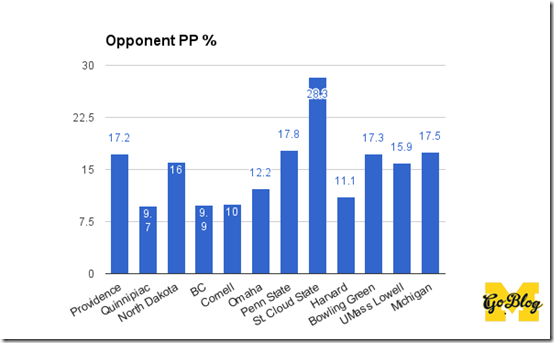

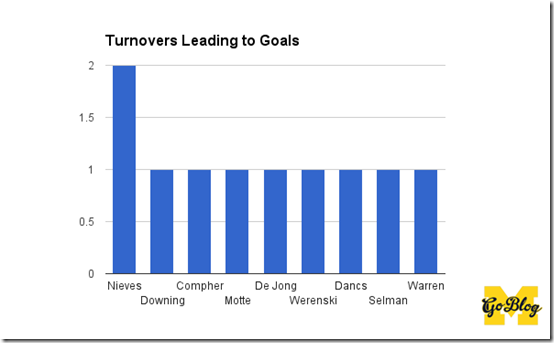
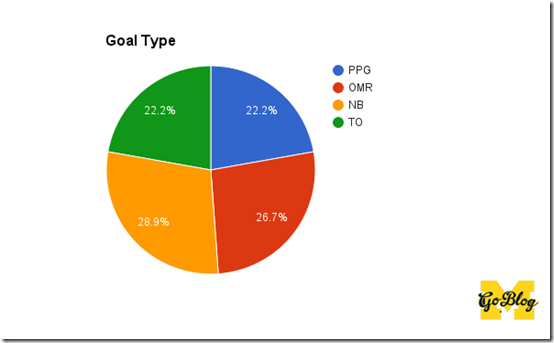
Comments